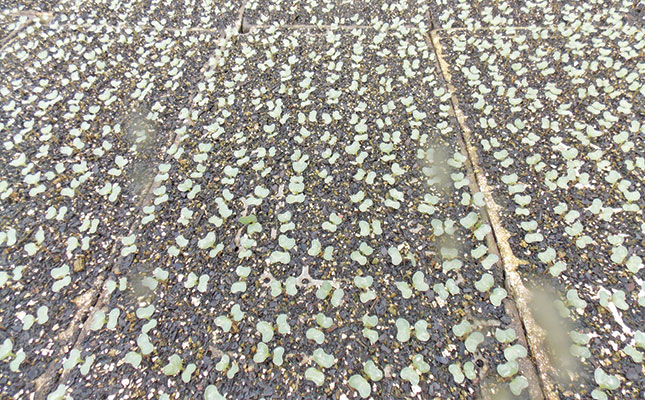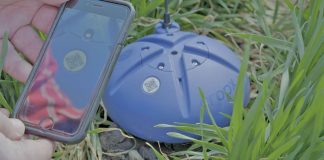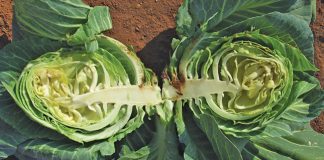
Photo: Bill Kerr
From time to time, I receive emails from new farmers asking how to grow seedlings, as they want to save money by doing it themselves. This is a recipe for disaster.
Apart from the infrastructure required and the cost of seedling trays, one needs a very good understanding of horticulture to grow seedlings.
Some farmers even want to plant the seed directly into soil and so bypass the cavity seedling tray process. Again, this requires extensive knowledge and experience.
Despite this, several Department of Agriculture, Land Reform and Rural Development vegetable-growing booklets give the option of seeding cabbage directly, and suggest a rate of 2kg seed/ ha.
This would cost at least R25 000/ ha today and the chance of success is very low.
If it takes knowledge, experience and a high level of care to produce seedlings in a small seedbed, can you imagine the struggle of trying to carry this out on an entire land?
The cost and difficulty of dealing with weeds and pests alone would be a nightmare. In addition, the crop would occupy the land for a month longer, during which time it would have to be irrigated.
Every now and again, a new farmer expresses an interest in planting an open-pollinated cabbage variety to save on seed costs, as the price of open-pollinated varieties is negligible. This, too, would be a disaster. If it were viable, commercial farmers would have done so long ago.
Open-pollinated varieties are no match for hybrids when it comes to disease resistance, yield and uniformity. A farmer might save on seed, but all other production costs remain the same, and the end result would be considerably lower yield and quality. It’s a lose-lose situation.
Transplanting seedlings
So much for growing your own seedlings. Let’s focus on how to transplant seedlings and get them off to a healthy start.
Prepare the soil in good time; if you wait too long, the seedlings may be ready before you are!
Some nurseries deliver the seedlings in seed trays, and these can be placed in a suitable area until the land is ready. If the plants arrive in plastic liners, however, they will need to be transplanted as soon as possible.
The longer you wait, the slower they will take off after planting.
It is important to apply nitrogen immediately after transplanting. This is especially as seedlings often arrive from the nursery with slightly low nitrogen levels due to the hardening process. Applying nitrogen early stimulates their growth.
The most convenient way of applying nitrogen is to irrigate the seedlings with one closed handful of LAN per 8ℓ of water for 2 000 seedlings. This simple method works far better than proprietary products designed for the purpose.
The difference that an early application of LAN can make was well demonstrated by a client of mine. While planting a land far from his shed one day, he ran out of LAN. Unwilling to walk all the way back, he planted the last few seedlings without the treatment. The difference between these plants and the rest that had been treated could be seen for a long time.
Bill Kerr is a vegetable specialist and a breeder of a range of vegetables.











